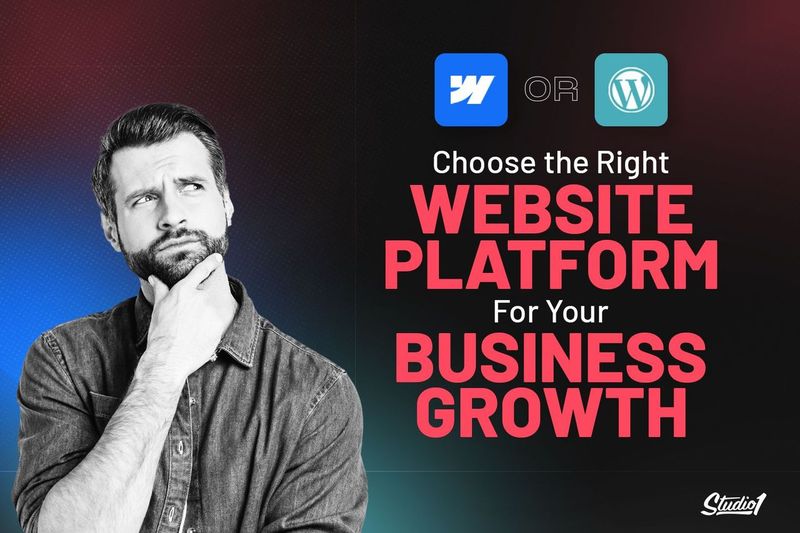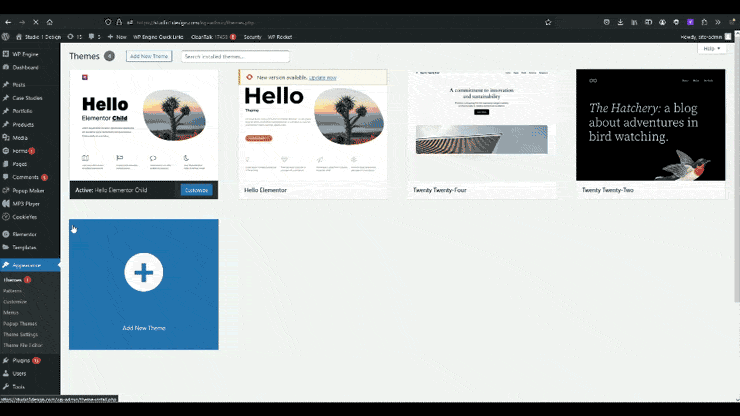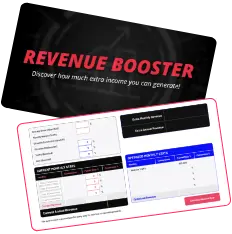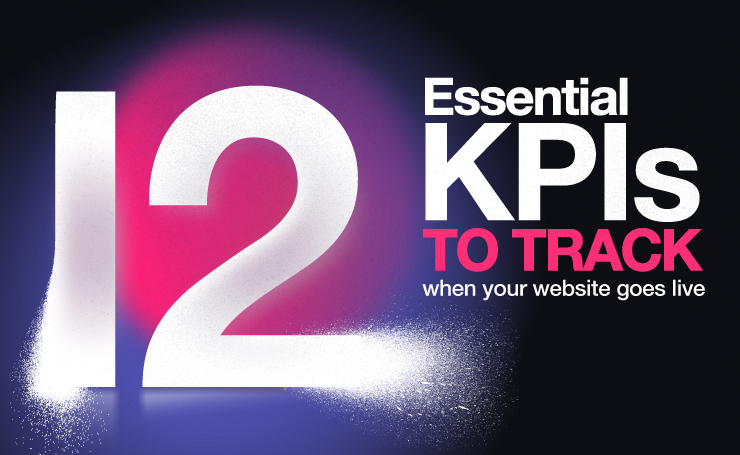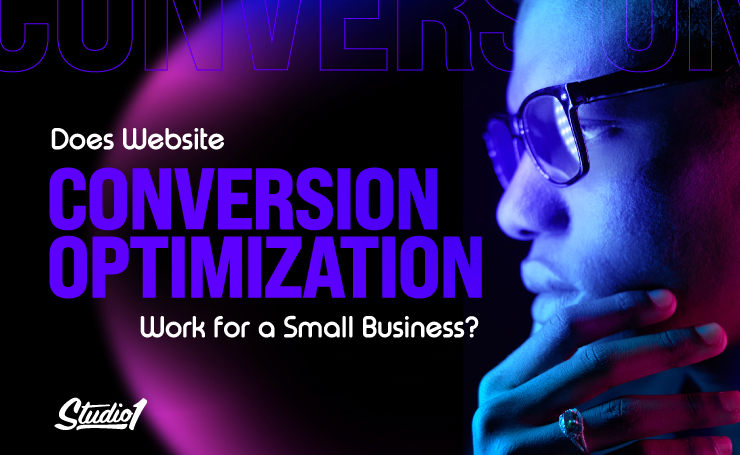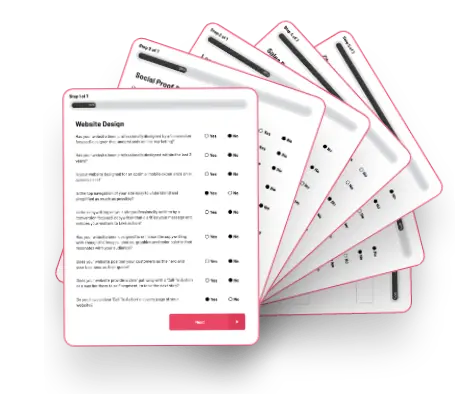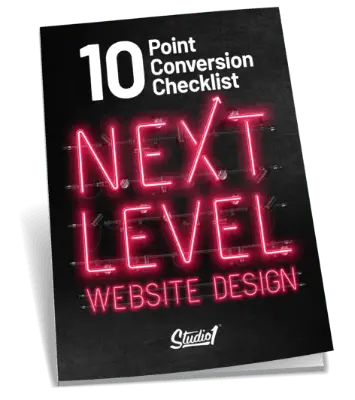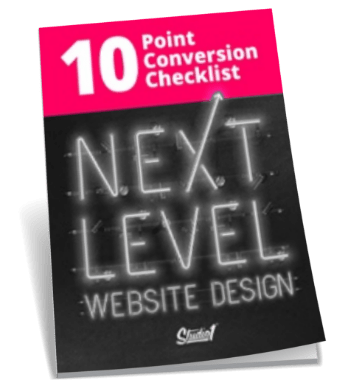Suppose you are about to embark on a grand adventure—a journey to create the perfect website for your small business that can adapt over time as your business grows. In that case, you may not be aware of a new player in town that is seriously worth considering.
On one side, there’s WordPress, a trusted veteran of website creation. On the other side, there’s Webflow, a modern contender that promises innovation and simplicity.
This choice can feel as daunting as selecting the right weapon for a knight.
This guide will help you navigate which platform is the best option for your small business. — WordPress or Webflow?
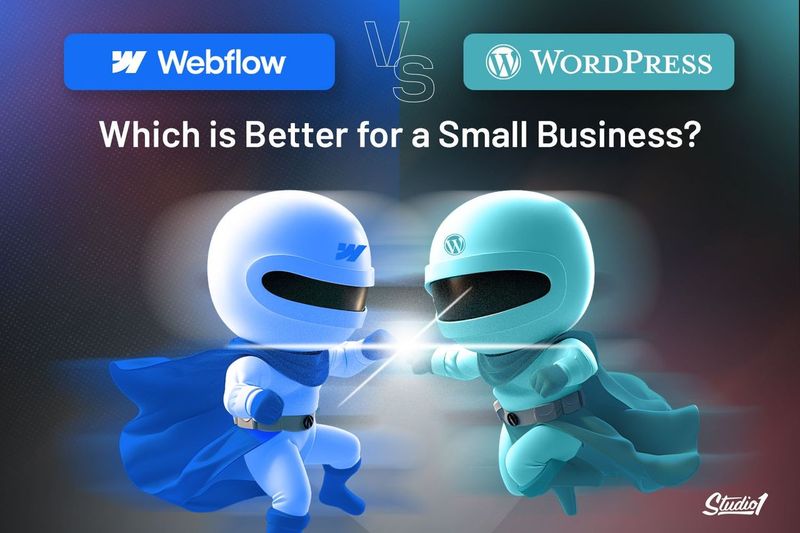
We all know WordPress…
WordPress is an open-source content management system (CMS) that powers over 40% of the web. It started as a blogging platform in 2003 and has since evolved into a versatile CMS capable of creating any website. WordPress is renowned for its flexibility, thanks to thousands of plugins and themes allowing for extensive customization, which can cause issues. More on that later.
What the heck is Webflow?
Webflow is a relatively new player in the website-building arena. Launched in 2013, it offers a visual, drag-and-drop interface that lets users design websites without writing code.
Webflow combines a powerful CMS with built-in hosting and a focus on responsive custom websites, making it an all-in-one solution for creating visually stunning websites that are super easy to use and make changes.
While both platforms can create websites, their approaches and target audiences differ significantly. WordPress is a platform that requires some technical know-how, especially when dealing with themes, plugins, and website hosting.
Webflow, on the other hand, isn’t a plugin-dependent system. It’s designed to be an intuitive, code-free modern solution, although you will still need knowledge of persuasive design principles, copywriting, and strategies to get you the best results possible.
Choose the Right Website Platform For Your Business Growth
Selecting the right platform can greatly impact your business’s online presence. The right choice can lead to a website that is easy to manage, highly customizable, and able to grow with your business.
It can save time, reduce costs, and provide a better user experience for your customers.
For instance, WordPress’s extensive plugin library can transform a basic site into a fully-featured powerhouse with e-commerce capabilities, advanced SEO tools, and more.
Webflow, with its visual builder, allows for real-time design changes, ensuring that your site looks exactly how you envision it.
Implications of Choosing the Wrong Platform
Conversely, choosing the wrong platform can result in a host of issues. WordPress sites can become slow and vulnerable if plugins are not managed correctly, and its open-source nature means you’re responsible for updates and security.
Webflow, while more streamlined, can be limiting if you require complex functionality not natively supported by the platform.
Choosing the wrong platform could mean higher costs in the long run—both in terms of money and time.
For example, a WordPress site might require hiring a developer to manage technical aspects, while a Webflow site might necessitate moving to a different platform if you outgrow its capabilities.
Busting a Myth: “WordPress is cheaper than Webflow.”
Reality: While WordPress itself is free, the costs of premium themes, essential plugins, reliable hosting, and ongoing maintenance can add up. Webflow’s all-inclusive pricing can sometimes be more cost-effective, especially when considering the reduced need for additional tools and security measures.
Key Considerations
1. Ease of Use
WordPress: WordPress is known for its steep learning curve, especially for beginners. Setting up a WordPress site involves choosing a hosting provider, installing WordPress, selecting a theme, and configuring various plugins. The dashboard, though powerful, can be overwhelming.
Webflow: Webflow’s visual editor is more intuitive for those without coding experience. It allows users to design their websites more visually and interactively. The onboarding process is guided, making it easier to start building your site. However, mastering all of Webflow’s features can still take some time.
Example: A small business owner with no technical background might struggle with WordPress but could quickly get a Webflow site up and running thanks to its guided tutorials and visual builder.
2. Customization and Design Flexibility
WordPress: WordPress shines in customization. Thousands of themes and plugins mean you can tailor your site to your exact specifications. However, achieving a unique design often requires some coding knowledge or the help of a developer.
Webflow: Webflow excels in design flexibility without the need for coding. Its visual editor offers extensive customization options and advanced animations that can make your site stand out. However, the selection of templates is smaller compared to WordPress.
Example: A design-focused agency might prefer Webflow for its visual design capabilities and the ease of creating bespoke, responsive websites without needing extensive coding.
3. Hosting, Security, and Maintenance
WordPress: With WordPress, you need to handle hosting separately. This gives you flexibility in choosing a host but also means you’re responsible for site maintenance, security updates, and backups. WordPress sites are often targeted by hackers, making security plugins a necessity.
Webflow: Webflow includes hosting as part of its package. This managed hosting environment ensures that security, performance, and updates are handled by Webflow, reducing the burden on the user.
If you don’t have the resources for ongoing technical maintenance, you will love the ease of Webflow’s managed self-hosting and built-in security features.
4. Website Longevity
WordPress has been around since 2003 so you would think it’s the best platform to choose in the future, right?
The problem with WordPress is that it’s getting old. We have seen a lot of businesses leave WordPress because it can be frustrating to keep it updated, add new pages, manage back-ups, and plugins, and deal with external hosting providers.
Webflow has only been around since 2012, so is that an issue?
Being such a new platform means that Webflow has been built with newer faster coding systems compared to WordPress. Webflow has been making updates frequently since then and will continue to do so.
They have a very loyal and strong community who are instrumental in providing feedback and helping shape the future of Webflow based on their needs.
Webflow’s CEO has mentioned they are only 5% into their long-term goals.
However, if for whatever reason they did have to close, they would notify everyone and make sure there is a smooth transition to export all of your data, including your website’s static HTML, CSS, JS, and images. Then you can import them into WordPress if you choose to, so your website will still be alive and well.
5. What about SEO?
WordPress has powerful SEO plugins like Yoast SEO and Webflow has a built-in SEO tool that is easy to configure. Both options give your website greater visibility in search engines like Google, Bing, etc.
Here’s a quick summary list of the main pros and cons of each platform, starting with WordPress:
WordPress Pros:
- WordPress is better suited for businesses needing extensive customization, advanced e-commerce capabilities, and a robust blogging platform, provided they have the resources to manage the associated maintenance.
- Pages can be built using drag & drop page builders such as Elementor, Divi, Thrive, Oxygen, Beaver, etc.
- Built-in SEO features and plugins like Yoast SEO make optimizing content straightforward.
- You have full control over your website’s data and files, ensuring you have complete ownership.
WordPress Cons:
- WordPress and plugins will need to be updated regularly to ensure security and functionality. You may need to hire somebody to ensure your website doesn’t break due to plugin conflicts.
- WordPress can be challenging initially for non-technical users to learn and manage effectively.
- Page builders can be slow to load, and conflict with other page builders that can cause things to break on your website.
- You will need to purchase website hosting separately. Be careful selecting a host because many of them are low quality so there’s a high chance your website will get hacked.
- If you decide to use a template built on WordPress, it will be difficult to make custom design changes, and there’s a good chance things will break over time if you do make changes.
WordPress Interface:
Webflow Pros:
- Easy-to-use content management system and no coding experience needed, which means it’s easy to make design changes and manage your website content and blog posts yourself.
- Webflow includes fast, reliable self-hosting on Amazon servers, with built-in SSL and security features. This means you don’t have to worry about managing these aspects separately, and your website will always be extremely secure from hackers.
- Webflow has built-in functionality for many features, reducing the risk of plugin conflicts and maintenance issues.
- If you decide that you want to move off Webflow, you can. They allow you to export all of the code of your website so you can move it to WordPress if preferred.
Webflow Cons:
- While the basic interface is user-friendly, mastering advanced features can be challenging and may require you to hire professional help.
- While Webflow’s user base is growing, it is still smaller than WordPress’ so it has fewer resources, tutorials, and community support.
- Webflow isn’t great for eCommerce compared to Shopify or WooCommerce because they don’t have as many integrations for now.
- Webflow is an all-in-one solution which means you will need to pay them to host your website and keep it secure.
Webflow Interface:
Best Use Cases:
Use Case 1: A Professional Service or SaaS Business:
If you want to be seen as a market leader with a unique and visually appealing website design, Webflow is a better option. You can hire a pro-level designer initially, then you can easily update your website, add or edit pages, without needing to delve into code, or hire a developer. You won’t need to worry about updating plugins or hackers. It’s also very easy to split-test design variations to help boost conversions.
Use Case 2: A Personal Brand or Content Creator:
A content creator, podcaster, or blogger may already have a WordPress website with a lot of pages and SEO work already in place. If that’s the case you may be better off staying with WordPress considering the amount of time and effort it would take to change platforms. However, if you don’t have thousands of pages of content yet, consider moving to Webflow. It’s much easier to add new pages, and funnels for you to test new offers to build your email list and sales.
Use Case 3: A Small E-commerce Business
A small e-commerce business might choose WordPress with the WooCommerce plugin for its flexibility and extensive e-commerce features. WooCommerce offers advanced inventory management, multiple payment gateways, and a plethora of e-commerce-specific plugins. However, managing a WordPress e-commerce site can be complex and might require a dedicated developer for maintenance. You may also want to consider Shopify, which is our preferred platform for more advanced e-commerce businesses.
Conclusion & Your Action Steps
Choosing between Webflow and WordPress depends on your specific needs, technical expertise, and long-term goals. Here’s how to evaluate which platform to go with:
- Assess Your Website Needs: Evaluate your business requirements, technical expertise, and budget. Determine which platform’s strengths align with your needs.
- Consider Your Long-term Goals: Think about your business’s growth. Will you need advanced features or more flexibility in the future? Make sure the platform you choose can scale with your business.
- Consult with Experts: If you’re still unsure, consult with an expert to provide personalized advice based on your specific situation.
Whether you’re leaning towards Webflow or WordPress, we can guide you through the pros and cons of each platform specific to your business, and ensure your website meets your business goals.
Book a call with us today to see how we can help you create a stunning, high-performing website built on WordPress or Webflow, or get a quote by pressing the ‘GET A QUOTE NOW’ button below…
